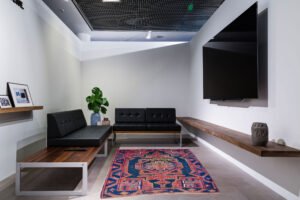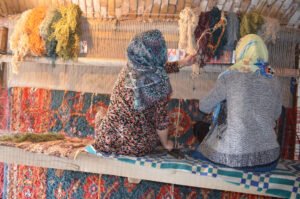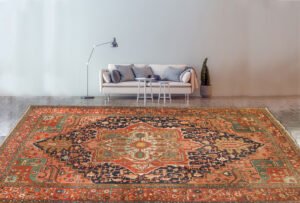Top Tips to Buying Handmade Rugs
- By Mehdi Sharafi
- Published:
- Last updated: October 17, 2025
Top Tips to Buying Handmade Rugs
Purchasing the perfect Persian antique or vintage rug demands time and attention. You have to choose a design that suits your style. Your choice doesn’t have to cost the moon. But it must match your vision, compliment the rest of your interior design scheme and help to put together your dream room.

Do your Homework
Before you part with your cash for a Persian antique or vintage rug, you must do your homework to become au fait with the pedigree of your purchase. Persian rugs are available in a vast assortment of patterns, designs, colours, patterns.
Dizzying Array of Designs and Values
A handmade Persian rug can be had from only a few hundred pounds and rise to dazzling heights. The record price paid for a 17th Century Persian carpet through Sotheby’s in New York stands at $33.8m (£26.2m).
Art of weaving
The prevalent art of weaving rugs can be traced back well over a millennium in Iran. Weaving rugs has been refined over generations, and there are history and high-quality craftsmanship behind it. These include the traditional natural dying, the high-quality local wool that is handspun, which are the fundamental ingredients of quality rugs. It may take several months to several years to make a Persian rug. These, along with the wide variety of design and excellent Persian weaving techniques, have given rise to the most valuable antique of today.
Quality and Durability
Persian rugs are a testament to the old adage that ‘things of quality have no fear of time’. For confirmation of that, browse through our website or the goods of any reputable dealer for antique Persian rugs that have stood the test of time. There is no Indian, Nepalese or Pakistani equivalents. Even though the mass-produced Persian designs, they have never matched the quality or durability.
Is it a Genuine Persian Rug?
Not acquiring the genuine article may well prove a false economy. Firstly the price differences between a genuine new modern Persian rug and a copy are at times negligible. Persian rugs are, in fact relatively inexpensive for what they are. One of the primary reasons for that is that Persian Rug production has been much higher than in other countries over the years. Secondly, to the untrained eye, the difference in the quality of non-Persian copy may not be readily discernible. Yet after only a year of use, the inferiority of such goods begins to tell.
Persian rugs win out when it comes to price and quality; the two significant factors you have to consider when you’re making a buying decision. So buy a Persian rug if you are after a long-lasting, timeless piece that you can pass on as a family heirloom.
Is it a Genuine Antique?
Theoretically, an antique rug is over a hundred years old. Yet, it would also have to have other vital attributes to make it a valuable antique.
The introduction of chemical dyes around the 1925s is an important milestone in rug production. Chemical dyes gradually crept into most areas and became more prevalent because of cost and time. Yet, it is the lustrous quality of natural dyes used in antique rugs that can instantly set it apart.
Array of Colours
The distinctive natural pigments on the palettes of old masters are used as basic signs of authenticity; The lead white, bone black, ochres, and siennas used by Rembrandt or Rubens purple hues created by blending wood charcoal, lead white, and cochineal. Similarly, an antique rug of a master weaver will display its pedigree through the vibrant colours that are unique to certain natural dyes.
Signs of Quality
Above all, it is the quality of the design that will determine value. If it is a very fine city piece, the precise execution of the design and the shape of the rug is also very important. With village or tribal pieces, quirkiness can be of great advantage. Generally, in terms of design, if it is of a unique, unusual design, it will be a lot more desirable by a collector.
So for a collectible antique rug, rarity and condition are the two things that one should focus on. But above all, it should be something that you would like to own, enjoy and treasure than the money side of the factors.
Always in Style
A Persian rug is never out of style, be it adorning the palatial homes of Henry VIII or draped on one of the most iconic pieces of furniture in the world, Freud’s couch. A Persian rug or runner readily blends into contemporary spaces bringing character to modern city living, while a grand large Persian rug sits easily in a room strewn with priceless antiques.
Durability
A beautifully crafted Persian rug –that may take as long as a year to weave — is the antithesis of disposable consumerism and throwaway culture. Those who have inherited an antique Persian rug from previous generations will vouch for its durability. While Persian rug antique collectors will tell you, a well-chosen piece is unlikely to depreciate in value. Even a handmade vintage piece can be sold after many years use at its original price or a profit and is very unlikely to end up in a landfill site.
Pedigree
Each carpet has its own history hidden within it, be it a very fine workshop piece or a small nomadic one. Many prized pieces with influential designs were woven in the Royal workshops of the 16th and 17thCentury.
Tribal carpets are often unique as they are typically woven freestyle for domestic use; with distinctive designs, colours and weaves that are identifiable to a tribe or subtribe.
Those in search of quirky idiosyncratic rug designs can also find them in sturdy Village artisanal rugs that are woven in homes, as part of the chores of the farming households for their own use.

Mastery of the Weave
In the middle of the 19th Century, workshops were established in cities like Kerman, Kashan, Tabriz and Arak specifically to meet the demands of the emerging Western markets.
The most famous of these workshops was established by the UK based rug merchants Ziegler Company in 1883 in the Sultanabad (Arak) district. The clarity of the designs along with its spatial depth and sense of movement are all elements that add to the desirability of these pieces.

Chemical dyes started creeping into rug production from the 1920s. However, for rich colours with depth, there is nothing like natural dyes used in most antique rugs.
Quality Markers
As a rule a quality handmade Persian rug is:
- Woven in 200 to 1.5M knots per square meter
- Mahandspunatural or even organic undyed hand-spun wools that all go towards making rugs that will stand the long test of time. This not only offers a natural lustre to a handmade Persian rug, but also makes them resistant to dirt and ware.
- The use of authentic Natural Dyes
Natural Stain Repellent
The quality of wool has a great impact oHandspunk and durability of a carpet. Hand-spun wool gives the carpet a lustrous almost three-dimensionalhandspun While the natural lanolin in hand-spun wool increases protection against spills and stains of your Persian rug.
Natural dyes by their nature would produce different intensities and colour saturation, which would come to fore over years of use and washing. These are changes of colour that you would see in some antique rugs. They are called Abrash in the trade.

These antique pieces are considered works of art that you can put on the floor, walk on and enjoy. Naturally, there will be some wear and restoration in these pieces.
A collector puts more importance on rarity and artistic merit than the condition. Having said that if the wear is not compatible with the age of the carpet it can affect its value greatly. Other aspects that can affect value are:
- Quality
- Extent of repair
- Sun fading
- Staining or chemical washing
Ethical Consumer
Last but not least by purchasing a vintage or antique rug you don’t just get something unique for your home; you are also a more environmentally friendly consumer. Your choice of a Persian handmade rug reduces landfill and reduces carbon emissions.
Ultimately your choice of a Persian handmade rug is a practical alternative to the “throwaway Society as quality rugs are made to last for generations.
Also be mindful of the fact that genuine Persian rugs have steadily climbed in recent years as the artisan weavers have fast diminished in numbers inside Iran.



